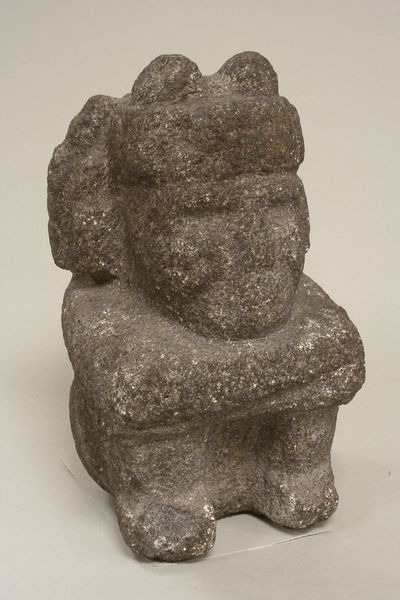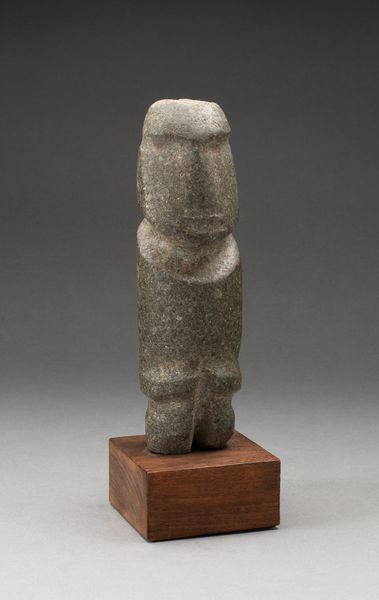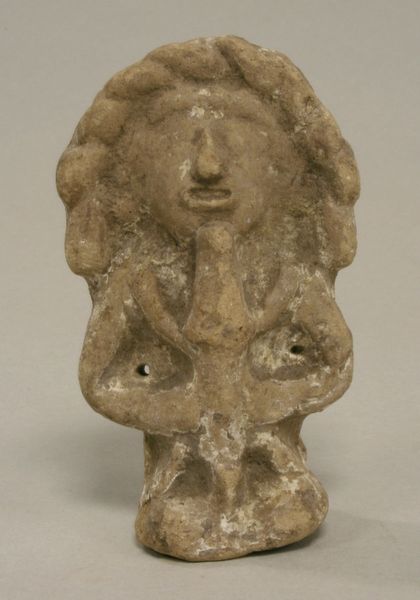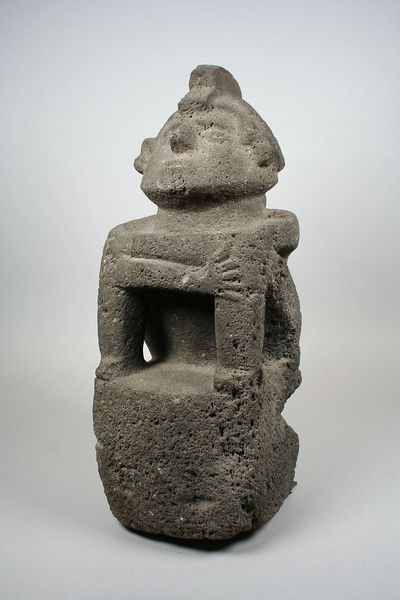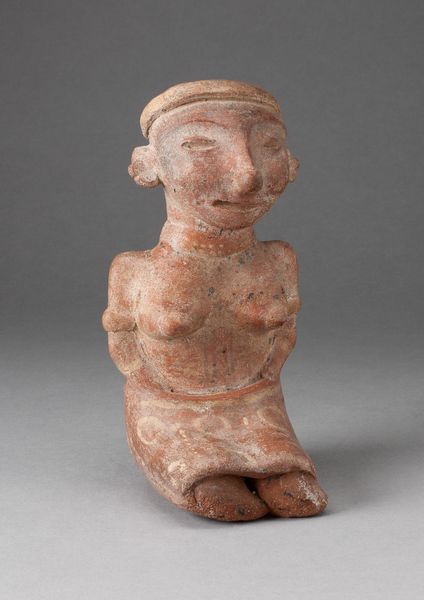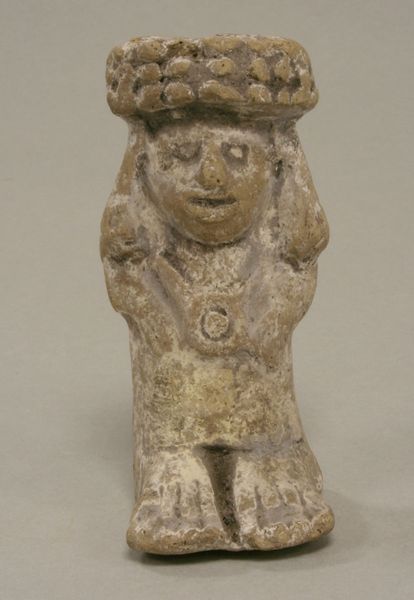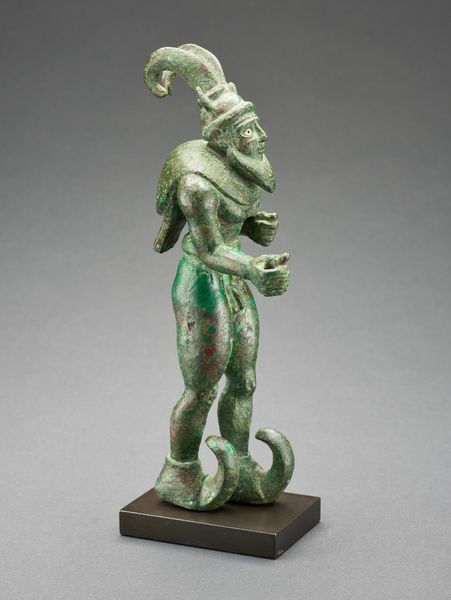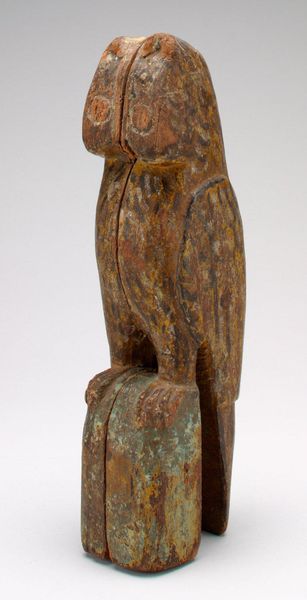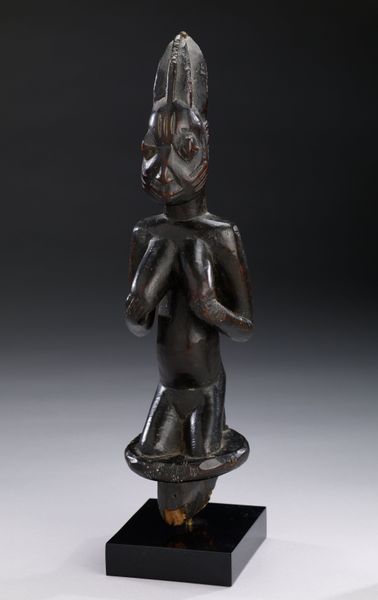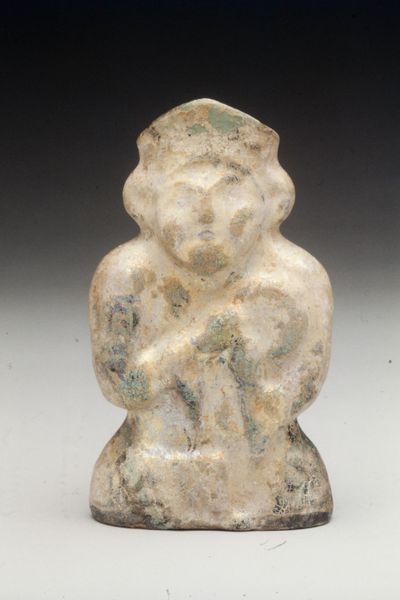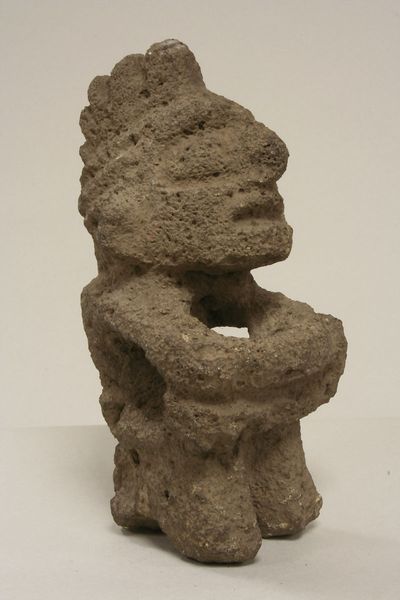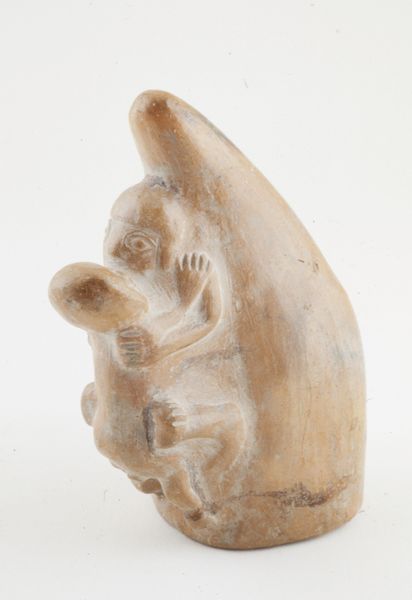
carving, sculpture
#
carving
#
sculpture
#
figuration
#
sculpture
#
indigenous-americas
Copyright: Public domain
This Seated Male Deity was sculpted by an Aztec artist between 1300 and 1521. It is made from a reddish-brown volcanic stone known as basalt. The sculptor has used the stone’s inherent qualities of weight and density to convey a sense of permanence and power. The figure’s seated posture, with arms crossed over the knees, suggests introspection and authority. Basalt would have been laboriously quarried, transported, and then carved using tools made of even harder stone, copper, and wood. The amount of labor involved in producing a sculpture like this indicates the high status of the patron, whether ruler or temple, and of the sculptor who fashioned it. The smooth surfaces and precise lines show the skill of the artist, who was likely trained in a specialized workshop. The sculpture is not merely a representation of a deity, but an embodiment of cultural values and beliefs. Appreciating the material and the making of this sculpture helps us understand its full significance, reminding us that even the most spiritual objects are rooted in earthly realities.
Comments
No comments
Be the first to comment and join the conversation on the ultimate creative platform.
